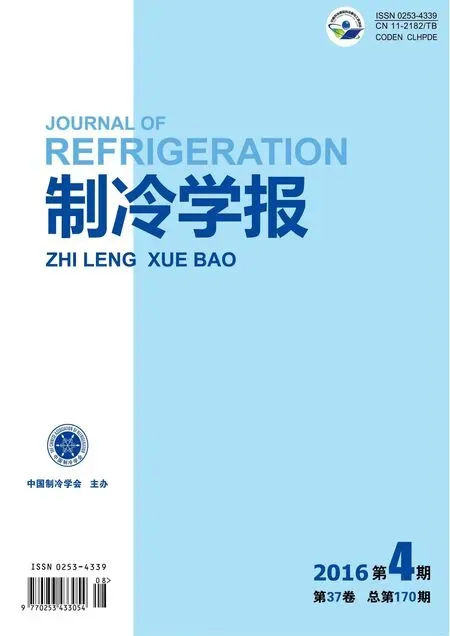基于分析的空调系统运行控制的多目标优化
方 兴 晋欣桥 杜志敏 王逸骏 范 波
(1 上海交通大学机械与动力工程学院 上海 200240; 2 美的中央空调研发中心 佛山 528311)

方 兴1晋欣桥1杜志敏1王逸骏1范 波2
(1 上海交通大学机械与动力工程学院上海200240; 2 美的中央空调研发中心佛山528311)
针对空调系统运行效率低下,且运行过程中子系统之间相互影响、相互制约的问题,本文基于分析方法提出一种空调系统多目标运行优化方法,以提高空调系统整体的运行效率。以某机场航站楼空调系统为研究对象,采用分析方法建立了空调系统的生产结构图,并根据生产结构将空调系统划分为3个子系统。在建立子系统分析模型的基础上,以3个子系统的最小损为优化目标,采用多目标粒子群优化算法(MOPSO)对空调系统的运行参数进行优化。针对某一典型日的运行工况对空调系统进行多目标优化,结果表明:相对于空调系统的原始控制方式,采用多目标运行优化方法可以有效减小空调各个子系统以及整个系统的损,使空调系统的运行效率明显提高,达到了节能的目的。
空气调节系统;优化控制;多目标优化方法;分析

1 研究对象
本文以中国南方某机场航站楼的空调系统为研究对象。该建筑物总建筑面积99300 m2,其中空调面积67950 m2。图1所示为航站楼空调系统示意图。
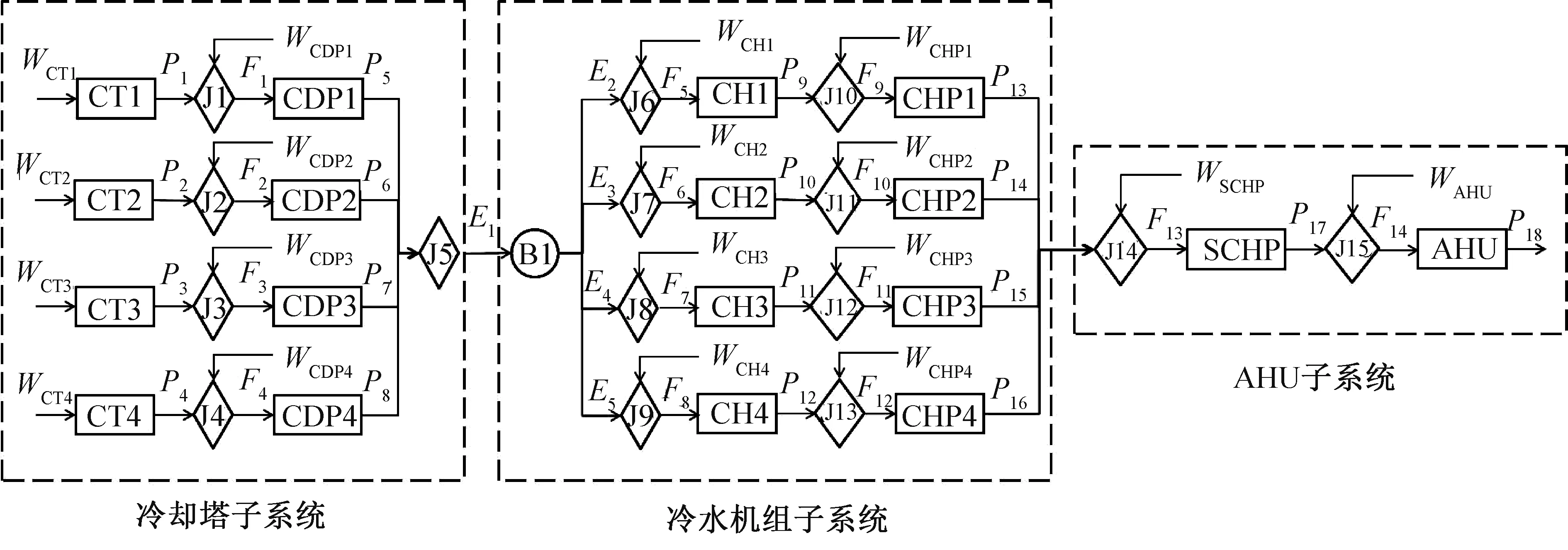
图2 航站楼空调系统的生产结构图Fig.2 Productive structure of HVAC system in airport terminal
如图1所示,航站楼空调系统的水系统采用一次泵定流量/二次泵变流量系统,其中包括4台离心式冷水机组、5台冷却塔(其中1台备用)、4台冷冻水泵、4台冷却水泵以及1台二次泵。在4台离心式冷水机组中:3台型号相同,单台功率为470 kW,制冷量为2460 kW;另外1台功率为836 kW,制冷量为4640 kW。此外,航站楼空调系统的末端由40个空调箱(AHU)构成,其中包括35个定风量空调箱(CAV)和5个变风量空调箱(VAV)。
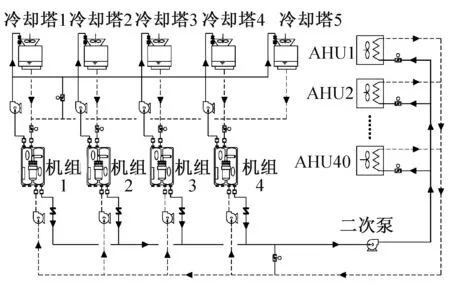
图1 某航站楼空调系统示意图Fig.1 Schematic of HVAC system in one airport terminal
该航站楼空调系统每天的运行时间为7:00—22:00,当室外干球温度高于22 ℃时启动冷水机组制冷,否则仅为通风运行工况。空调系统的原始运行参数为:冷水机组冷却水进水温度设定值为30 ℃,冷水机组冷冻水出水温度设定值为7 ℃,AHU送风温度设定值为16 ℃,冷水机组的运行方式为顺序启停[9](即根据实际负荷的大小依次开停冷水机组)。
为了研究分析空调系统全年的运行性能,笔者基于TRNSYS 17仿真软件建立了该空调系统的仿真模型,其准确性得到验证[9]。
2 空调系统分析模型的建立
2.1 空调系统生产结构图

在图2中,矩形表示物理组件,菱形表示汇集组件,圆形表示分支组件。图中各符号的含义如表1所示。
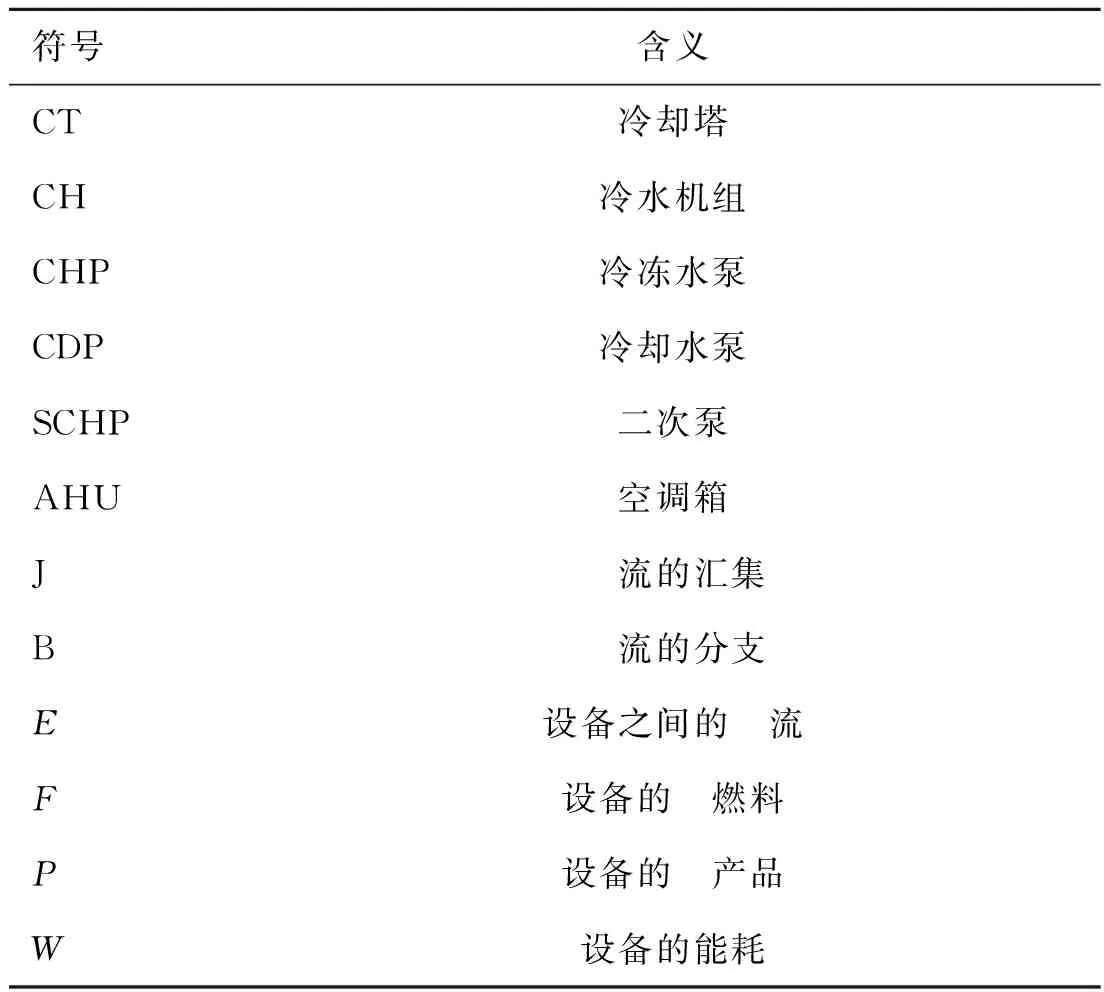
表1 空调系统生产结构图中符号说明

Ii=Fi-Pi
(1)
(2)
(3)



表2 空调子系统的燃料和产品
冷却塔经验模型如方程(4)所示[12]:
(4)
式中:QCT为冷却塔换热量,kW;Mcta为冷却塔风机风量,kg/s;Mctw为冷却塔的冷却水量,kg/s;tctw,in为冷却塔进水温度, ℃;twb,oa为室外空气湿球温度, ℃;b0~b3为拟合系数。

(5)

冷却塔的能耗与冷却塔风机风量的关系可以由以下经验关系式表达[12]:
(6)
式中:a0~a3为回归系数。
由于冷却水泵采用的是定频泵,故冷却水泵的能耗为定值:WCDP=45 kW。

(7)


(8)

IsubII=IsubII,1+IsubII,2
(9)
冷水机组能耗的经验关系式如式(10)~式(12)所示[13]:
(10)
PLRrev=c0+c1×PLR+c2×PLR2
(11)

(12)
式中:Qcap为冷水机组的额定制冷量,kW;COPnom为冷水机组的额定COP;PLR为部分负荷率;PLRrev为部分负荷率对COP的修正系数;Temprev为温度对COP的修正系数;c0~c2,d0~d5为回归系数。
由于冷冻水泵采用的是定频泵,故冷冻水泵的能耗是个定值:WCHP=35 kW。
EAHUa,in=(cp,a+ωAHUa,incp,v)[(tAHUa,in+273.15)-
(13)


(14)


IsubIII=WAHU+WSCHP+EAHUa,in-EAHUa,out
(15)

(16)
(17)
式中:MAHU,a为AHU的风量,kg/s;MAHU,w为AHU的冷冻水流量,kg/s;e0~e3,f0~f3为回归系数。
3 空调系统运行控制的多目标优化
3.1 MOPSO优化算法
多目标粒子群优化算法[7](Multi-objective particle swarm optimization,MOPSO)是通过寻找Pareto最优解集来解决多目标之间协调与选择问题的一种优化算法。其中,Pareto最优解的定义为[8]:若x*是搜索空间中一点,若x*为Pareto最优解,当且仅当搜索空间中不存在i,使fi(x) vi,j(t+1)=ω×vi,j(t)+c1×rand()×(pbesti,j-xi,j(t))+c2×rand()×(gbesti,j-xi,j(t)) (18) xi,j(t+1)=xi,j(t)+vi,j(t+1) (19) 式中:j=1,…,N(N为群体中粒子的总数);vi,j为粒子的速度;pbest和gbest分别为粒子的最佳位置和种群的最佳位置;rand()是介于(0,1)之间的随机数;xi是粒子的当前位置;c1和c2是学习因子,通常取c1=c2=2.0[15];ω为惯性权重。 3.2 空调系统多目标优化函数的建立与求解 (20) 优化变量的约束条件为: tcdw,in_min≤tcdw,in_set≤tcdw,in_max (21) tchw,out_min≤tchw,out_set≤tchw,out_max (22) tAHUa,out_min≤tAHUa,out_set≤tAHUa,out_max (23) PLRmin≤PLRi≤1.0 (24) (25) 空调系统多目标优化的流程如图3所示。 图3 空调系统多目标优化控制逻辑Fig.3 The logic graph of multi-objective optimization strategy of HVAC system 选取全年中某一典型日的运行工况为例,对空调系统进行多目标运行优化。图4和图5分别为典型日室外干湿球温度和建筑冷负荷的逐时变化情况。 图4 典型日室外干湿球温度Fig.4 Outdoor dry bulb temperature and wet bulb temperature on typical day 图5 典型日建筑冷负荷Fig.5 Building′s cooling load on typical day 选取MOPSO优化算法的设置参数如表3所示。 表3 MOPSO算法的设置参数 4.1 典型日某时刻空调系统多目标优化结果与分析 以典型日上午8时的运行工况为例,其工况条件为:室外干球温度28.5 ℃, 室外湿球温度26.2 ℃,房间冷负荷4610 kW。采用MOPSO优化算法寻找Pareto最优解集的结果如图6所示。图中空心圆点代表经100次迭代后种群(包含200个粒子)的计算结果,实心圆点代表经100次迭代后得到的Pareto最优解集。 图6 典型日上午8时MOPSO优化算法寻优结果Fig.6 MOPSO searching results at 8:00 on typical day 4.2 典型日全日空调系统多目标优化结果与分析 计算典型日各个子系统及整个空调系统优化前后的总能耗,结果如表4所示。 图7 典型日上午8时空调系统优化前后子系统和系统的损比较Fig.7 Exergy losses comparison of HVAC subsystem under original control and multi-objective optimization at 8:00 on typical day 图8 典型日全日空调系统优化前后子系统和系统的损比较Fig.8 Exergy losses comparison of HVAC subsystem under original control and multi-objective optimization on typical day 项目子系统I子系统II子系统III系统原始控制典型日总能耗/kJ3535.4923211.5610794.4437541.49多目标优化典型日总能耗/kJ2930.2219980.869438.4032349.48节能量/kJ605.273230.701356.045192.01节能率/%17.113.912.613.8 如表4所示,当采用空调系统多目标优化方法后,空调各个子系统及整个系统的总能耗都有所减小。其中,子系统I的总能耗减小605.27 kJ,子系统II的总能耗减小3230.70 kJ,子系统III的总能耗减小1356.04 kJ,整个系统的总能耗减小5192.01 kJ,系统的总节能率为13.8%。 由表4可见,经过多目标优化后,在空调系统的3个子系统中子系统II的节能量最多。子系统II主要包括冷水机组和冷冻水泵,其中冷冻水泵选用的是定频泵,在运行过程中其能耗是一个定值,所以多目标优化方法是通过提高冷水机组的运行效率来减小子系统II的运行能耗。考察典型日空调系统优化前后冷水机组的逐时COP,如图9所示。 图9 典型日空调系统优化前后冷水机组COP比较Fig.9 COP comparison of chiller under original control and multi-objective optimization on typical day 由图9可以看出,采用多目标优化方法使得典型日冷水机组的逐时COP有明显的提高,优化后使冷水机组全日平均COP从4.86提高到5.65,冷水机组的运行效率得以提高,从而减小了子系统II的能耗。 2)多目标优化方法使得空调各个子系统及整个系统的能耗都有所减小,系统的总节能率为13.8%; 3)对于冷水机组子系统而言,多目标优化方法提高了典型日冷水机组的平均COP,从而减小了冷水机组子系统的能耗。 [3]Sakulpipatsin P, Itard L C M, Van der Kooi H J, et al. An exergy application for analysis of buildings and HVAC systems[J]. Energy and Buildings, 2010, 42(1): 90-99. [4]王景刚, 马一太, 魏东, 等. CO2跨临界双级压缩带膨胀机制冷循环研究[J]. 制冷学报, 2001, 22(2): 6-11. (WANG Jinggang, MA Yitai, WEI Dong, et al. Study of CO2transcritical two stage compression with turbine cycle[J]. Journal of Refrigeration, 2001, 22(2): 6-11.) [5]Fan B, Jin X, Fang X, et al. The method of evaluating operation performance of HVAC system based on exergy analysis[J]. Energy and Buildings, 2014, 77(7): 332-342. [6]Razmara M, Maasoumy M, Shahbakhti M, et al. Optimal exergy control of building HVAC system[J]. Applied Energy, 2015, 156: 555-565. [7]郑金华. 多目标进化算法及其应用[M]. 北京: 科学出版社, 2007: 9-10. [8]曾建潮, 介婧, 崔志华. 微粒群算法[M]. 北京: 科学出版社, 2004: 9-13. [9]Fan B, Jin X, Du Z. Optimal control strategies for multi-chiller system based on probability density distribution of cooling load ratio[J]. Energy and Buildings, 2011, 43(10): 2813-2821. [10] Tsatsaronis G, Pisa J. Exergoeconomic evaluation and optimization of energy systems-application to the CGAM problem[J]. Energy, 1994, 19(3): 287-321. [11] Uche J. Thermoeconomic analysis and simulation of a combined power and desalination plant[D]. Department of Mechanical Engineering: University of Zaragoza, 2000. [12] Jin G Y, Cai W J, Lu L, et al. A simplified modeling of mechanical cooling tower for control and optimization of HVAC systems[J]. Energy Conversion and Management, 2007, 48(2): 355-365. [13] Lu L, Cai W J, Soh Y C, et al. HVAC system optimization-condenser water loop[J]. Energy Conversion and Management, 2004, 45(4): 613-630. [14] Ren C, Li N, Tang G. Principles of exergy analysis in HVAC and evaluation of evaporative cooling schemes[J]. Building and Environment, 2002, 37(11): 1045-1055. [15] 周璇, 蔡盼盼, 练斯甄, 等. 基于PSO-SVR的冷水机组运行能效预测模型研究[J]. 制冷学报, 2015, 36(5): 87-93. (ZHOU Xuan, CAI Panpan, LIAN Sizhen, et al. Research on COP prediction model of chiller based on PSO-SVR[J]. Journal of Refrigeration, 2015, 36(5): 87-93.) [16] Deb K, Pratap A, Agarwal S, et al. A fast and elitist. multi-objective genetic algorithm: NSGA-I1[J]. IEEE Transactions on Evolutionary Computation, 2002, 6(2): 182-197. [17] Coello C A. Evolutionary algorithms for solving multi-objective problems[M]. New York: Kluwer Academic, 2002. About the corresponding author Jin Xinqiao, male, Ph.D./Professor, Institute of Refrigeration and Cryogenics, Shanghai Jiao Tong University,+86 21-34206774, E-mail: xqjin@sjtu.edu.cn. Research fields: Simulation and optimal control of HVAC&R systems, FDD of HVAC&R systems. Multi-objective Optimization Method for HVAC System based on Exergy Analysis Fang Xing1Jin Xinqiao1Du Zhimin1Wang Yijun1Fan Bo2 (1.School of Mechanical Engineering, Shanghai Jiao Tong University, Shanghai, 200240,China;2. Midea Air-conditioner R&D Center, Foshan, 528311,China) Since the operation efficiency of HVAC system is low and the operation performance of subsystems are commonly affected by each other, a multi-objective optimization method to improve the operation performance of entire HVAC system is proposed based on exergy analysis. The HVAC system of an airport terminal is chosen as the study object. Exergy analysis is applied to set up the productive structure of the HVAC system. According to the productive structure of the HVAC system, the HVAC system can be divided into three subsystems: cooling tower subsystem, chiller subsystem, and AHU subsystem. Based on the exergy models of three subsystems, MOPSO method is employed to search for the lowest exergy losses of three subsystems by optimizing the control sets of the HVAC system. A typical day test results show that the optimization method can obviously reduce the exergy losses of all three subsystems and the entire system compared with the original control. So the operation efficiency of the HVAC system can be improved by the multi-objective optimization method. HVAC system; optimal control; multi-objective optimization method; exergy analysis 0253- 4339(2016) 04- 0007- 09 10.3969/j.issn.0253- 4339.2016.04.007 国家自然科学基金(51376126)资助项目。(The project was supported by the National Natural Science Foundation of China (No.51376126).) 2016年1月19日 TU831.3 A 简介 晋欣桥,男,教授,博士生导师,上海交通大学制冷与低温工程研究所,(021)34206774,E-mail: xqjin@sjtu.edu.cn。研究方向: 制冷空调系统仿真与优化控制、建筑空调系统故障诊断等研究。
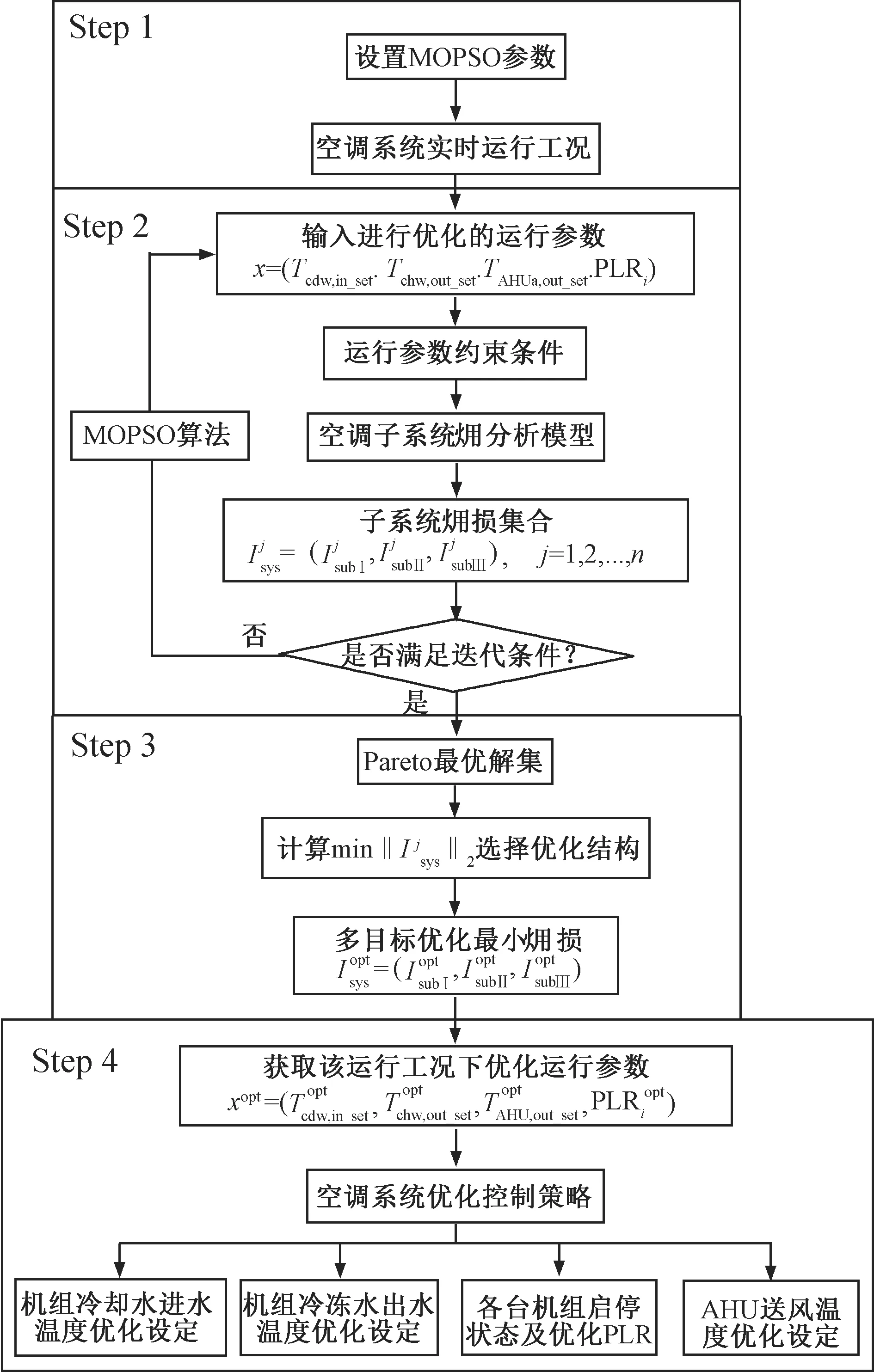

4 空调系统运行控制的多目标优化结果与分析
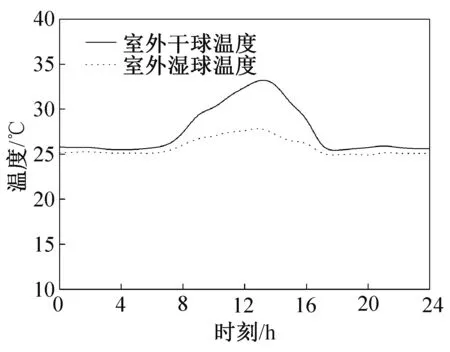
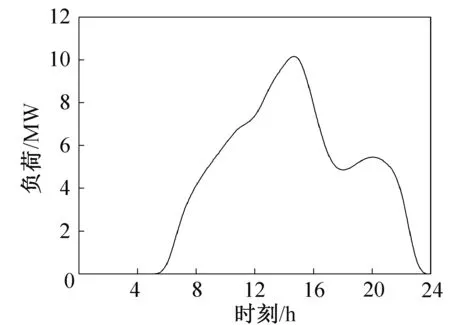

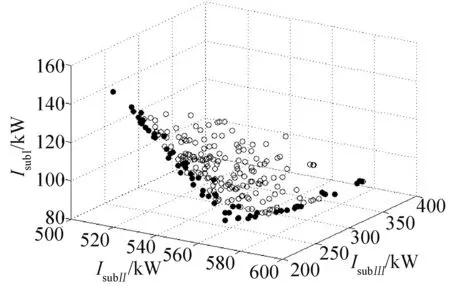




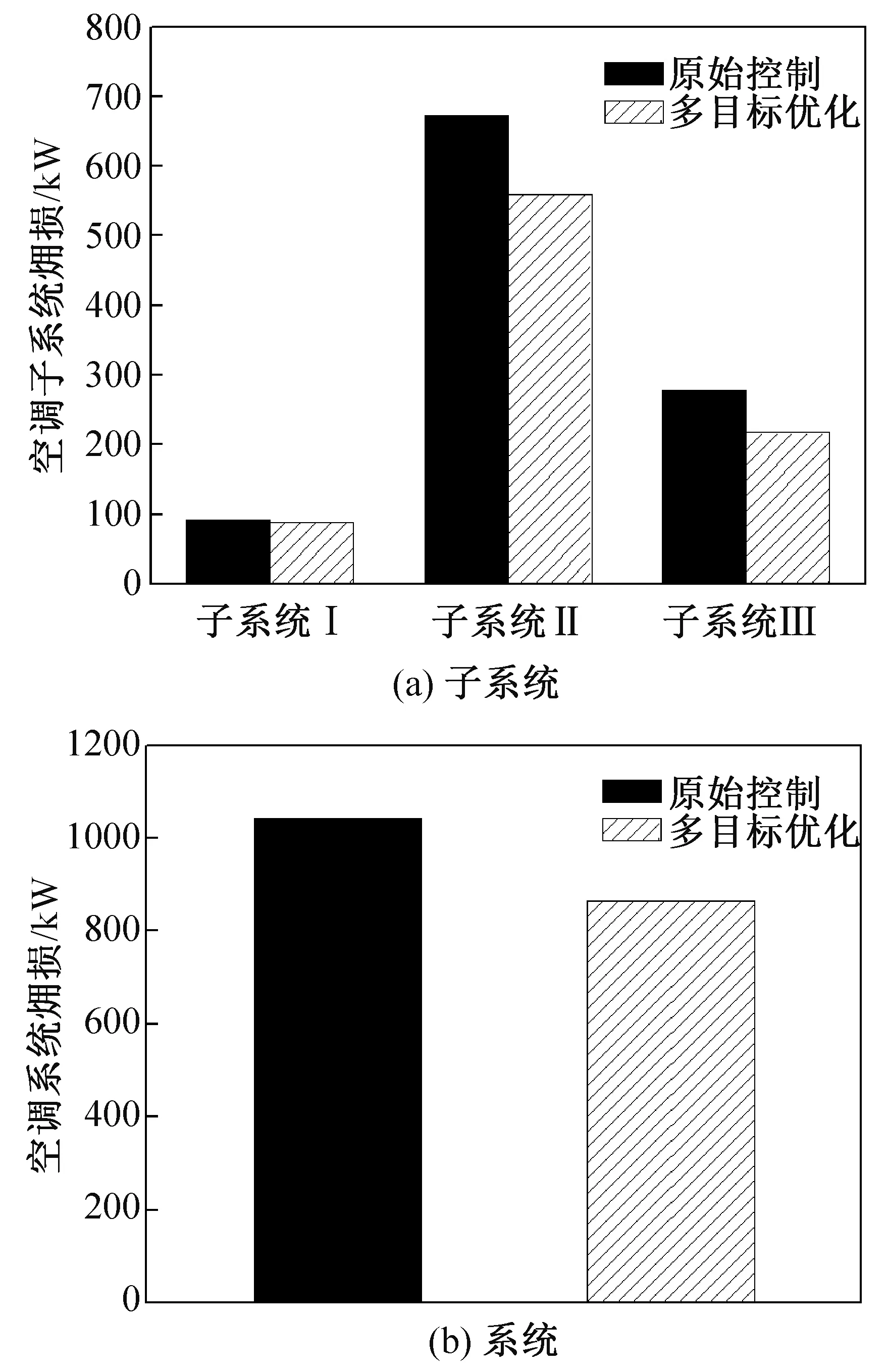
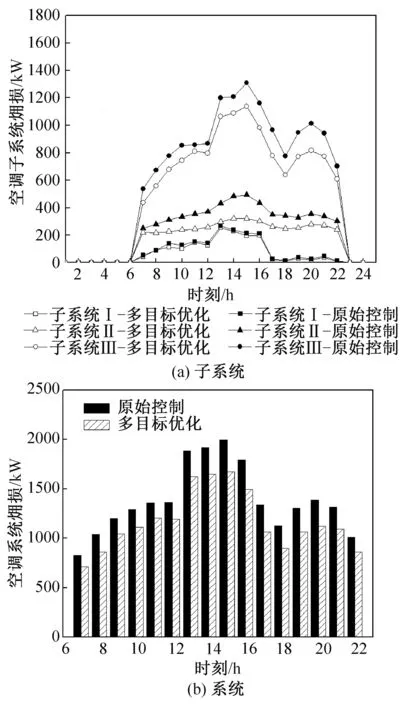

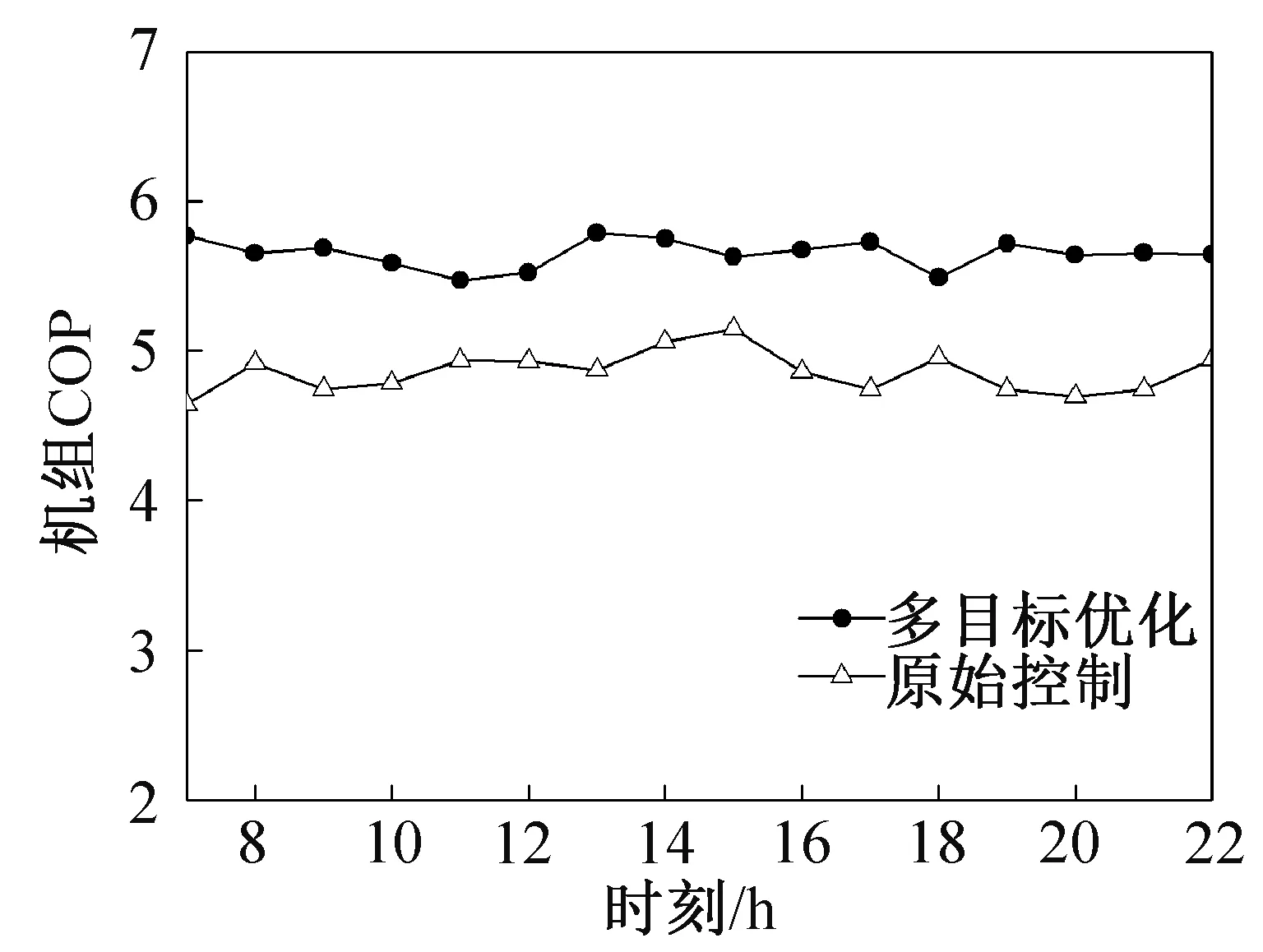
5 结论



